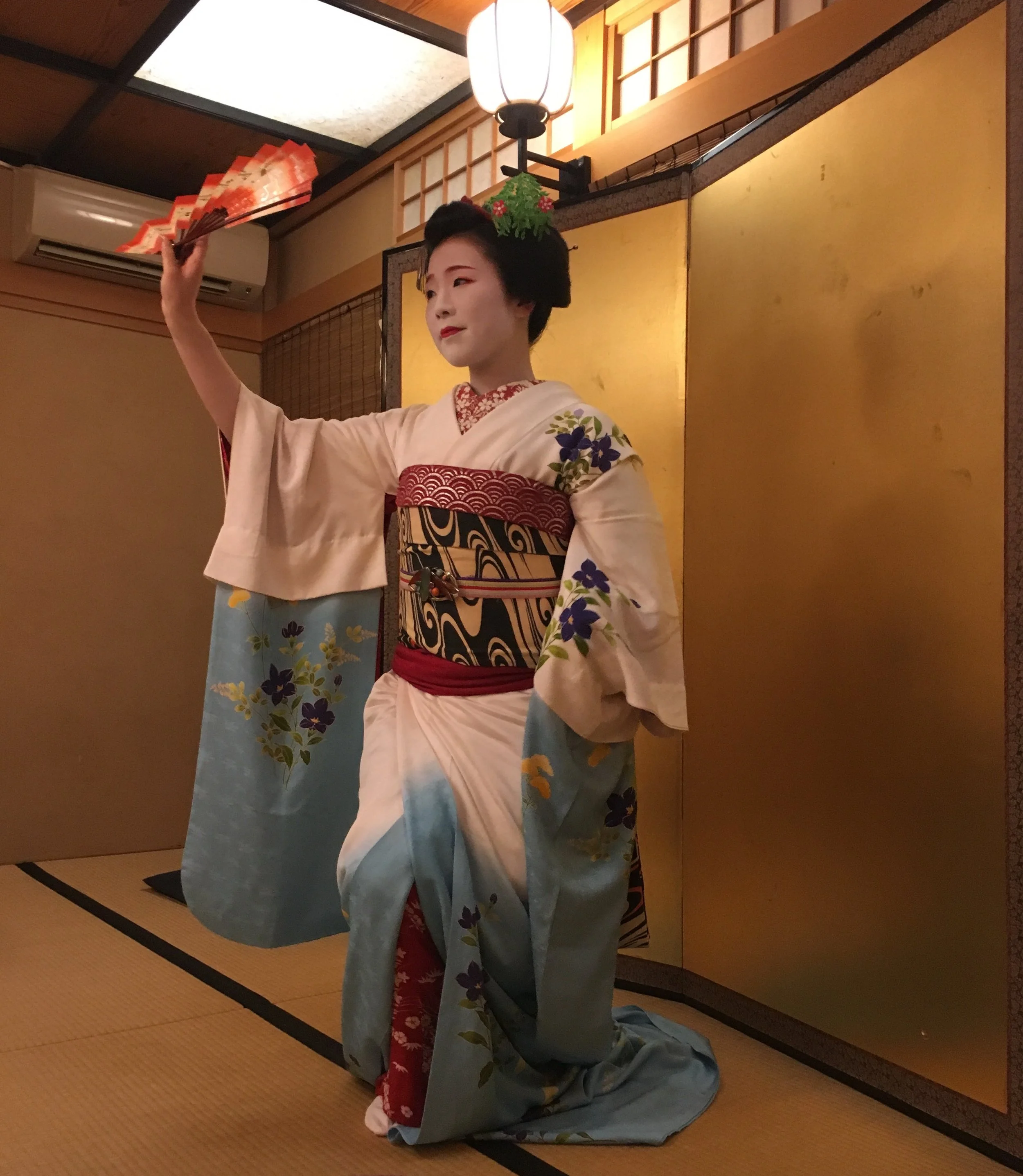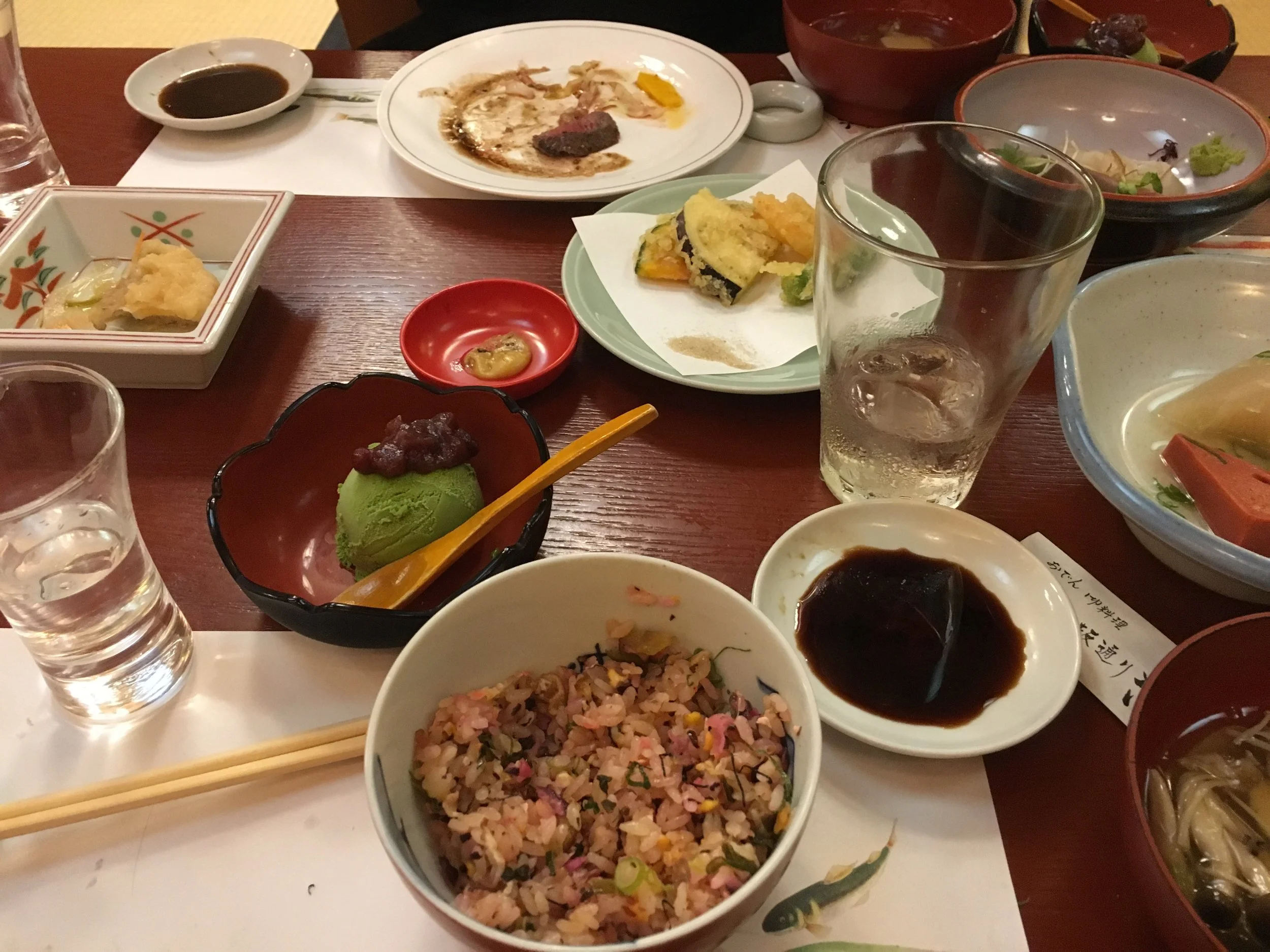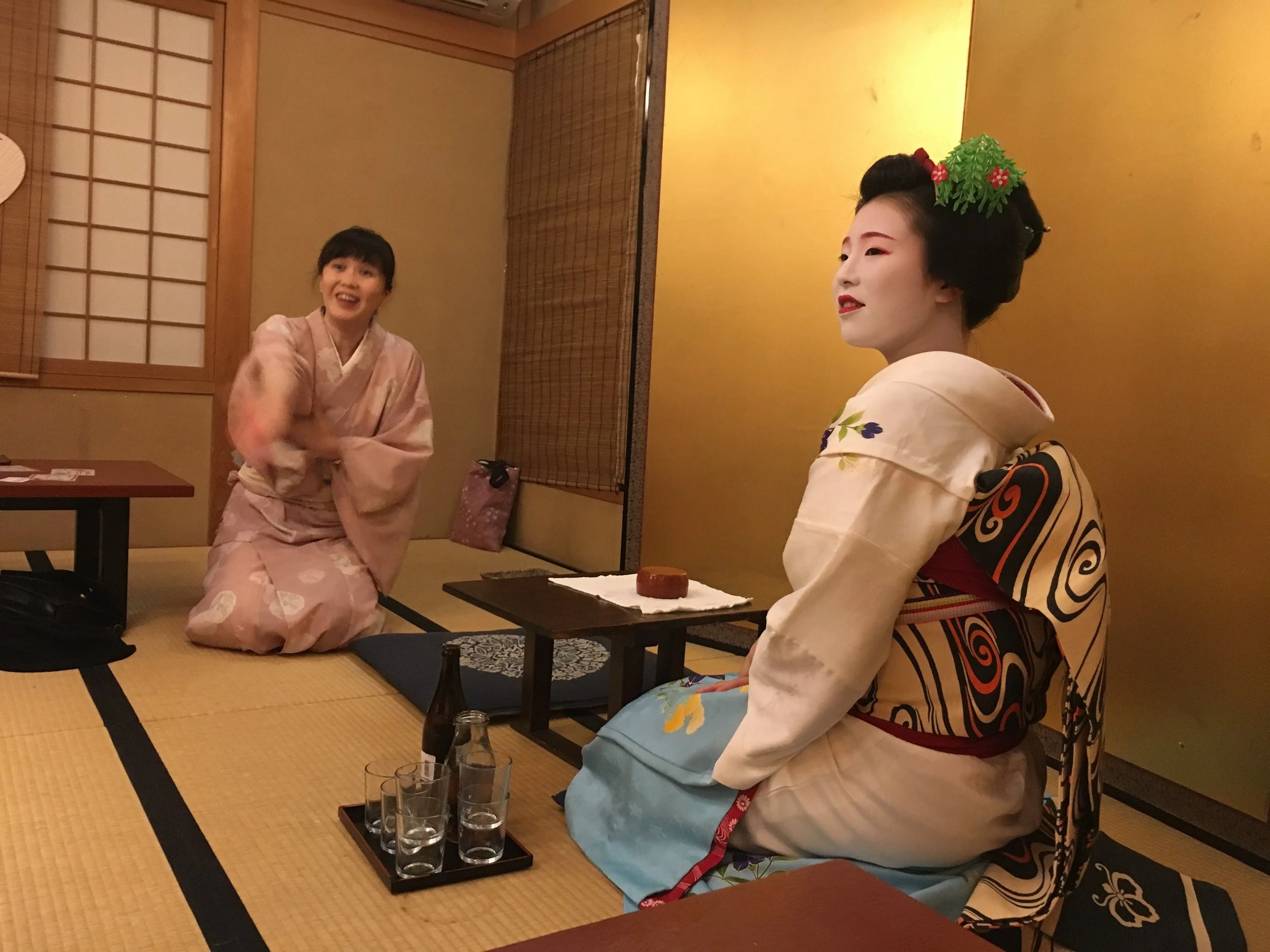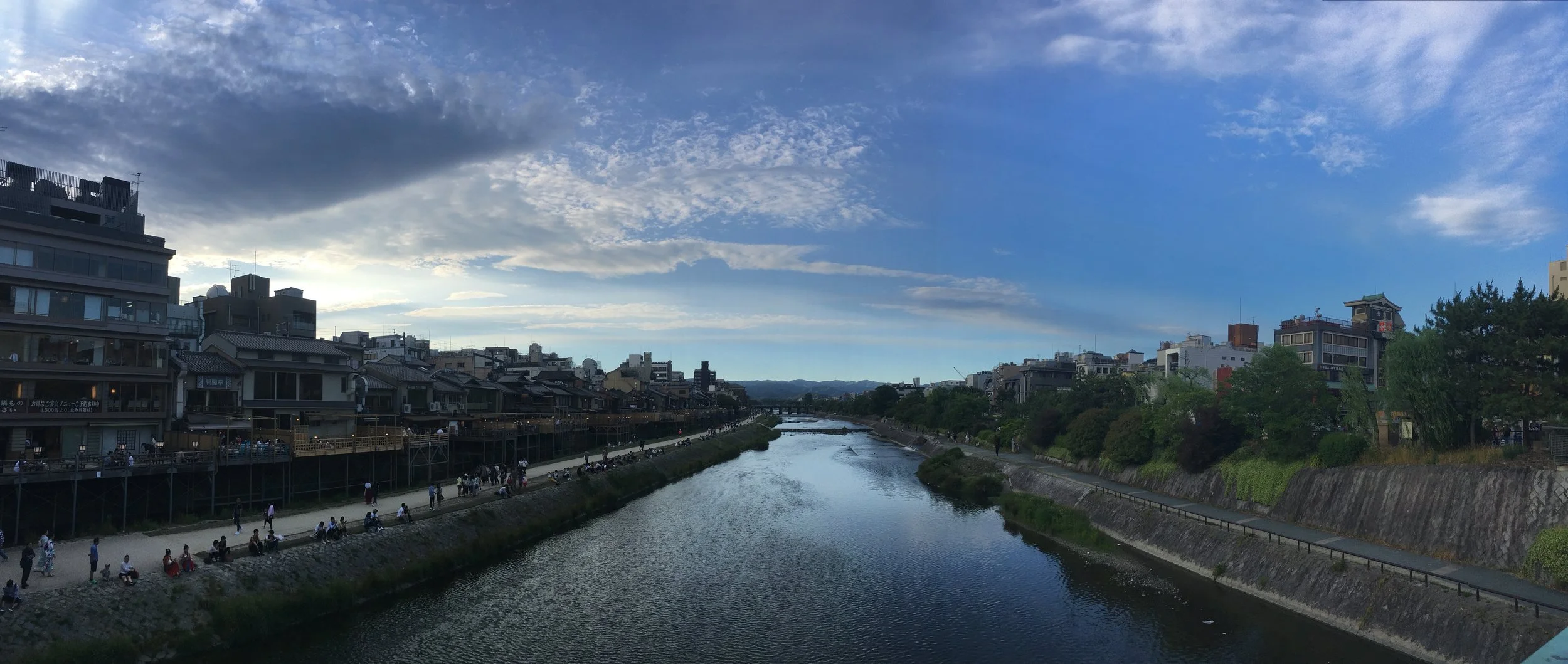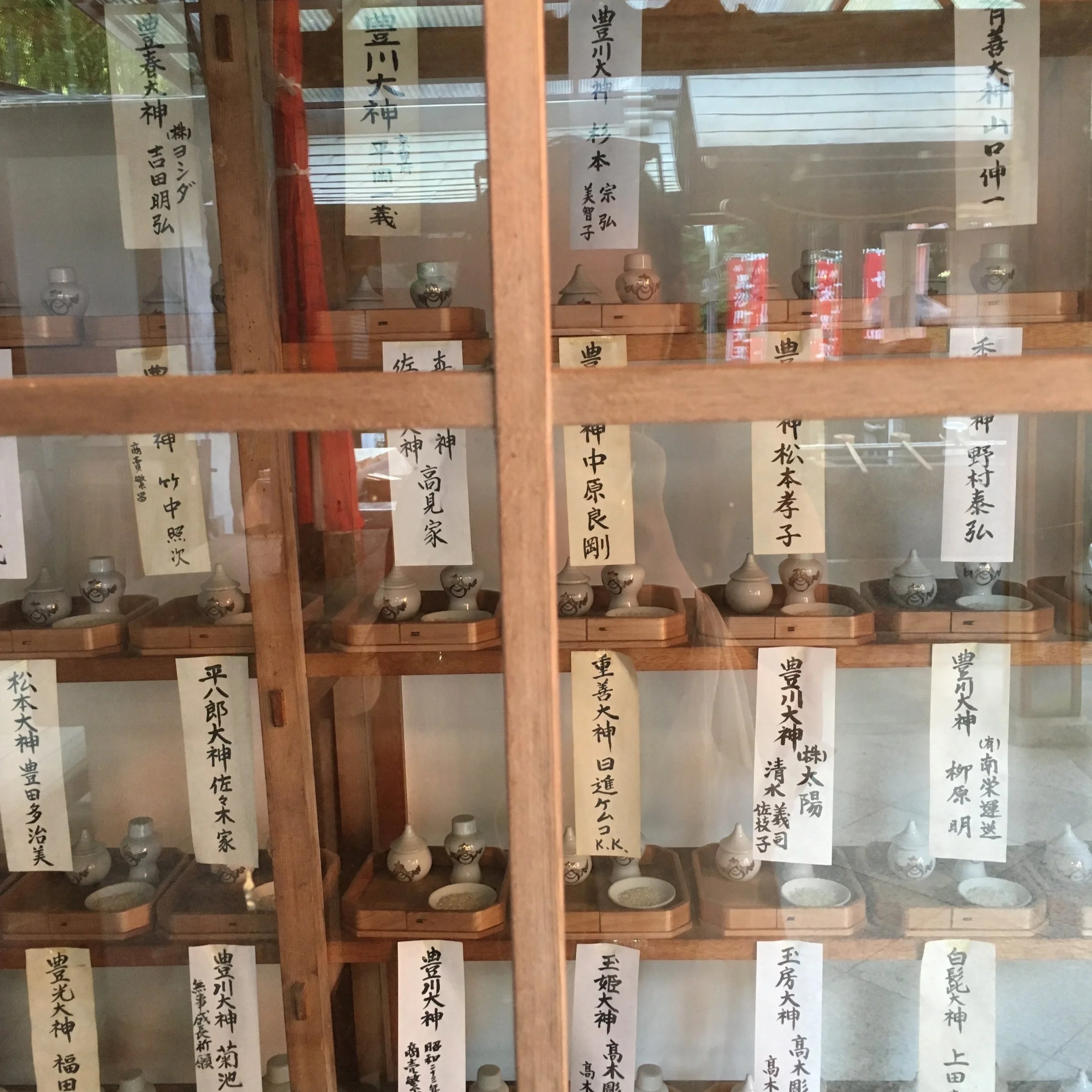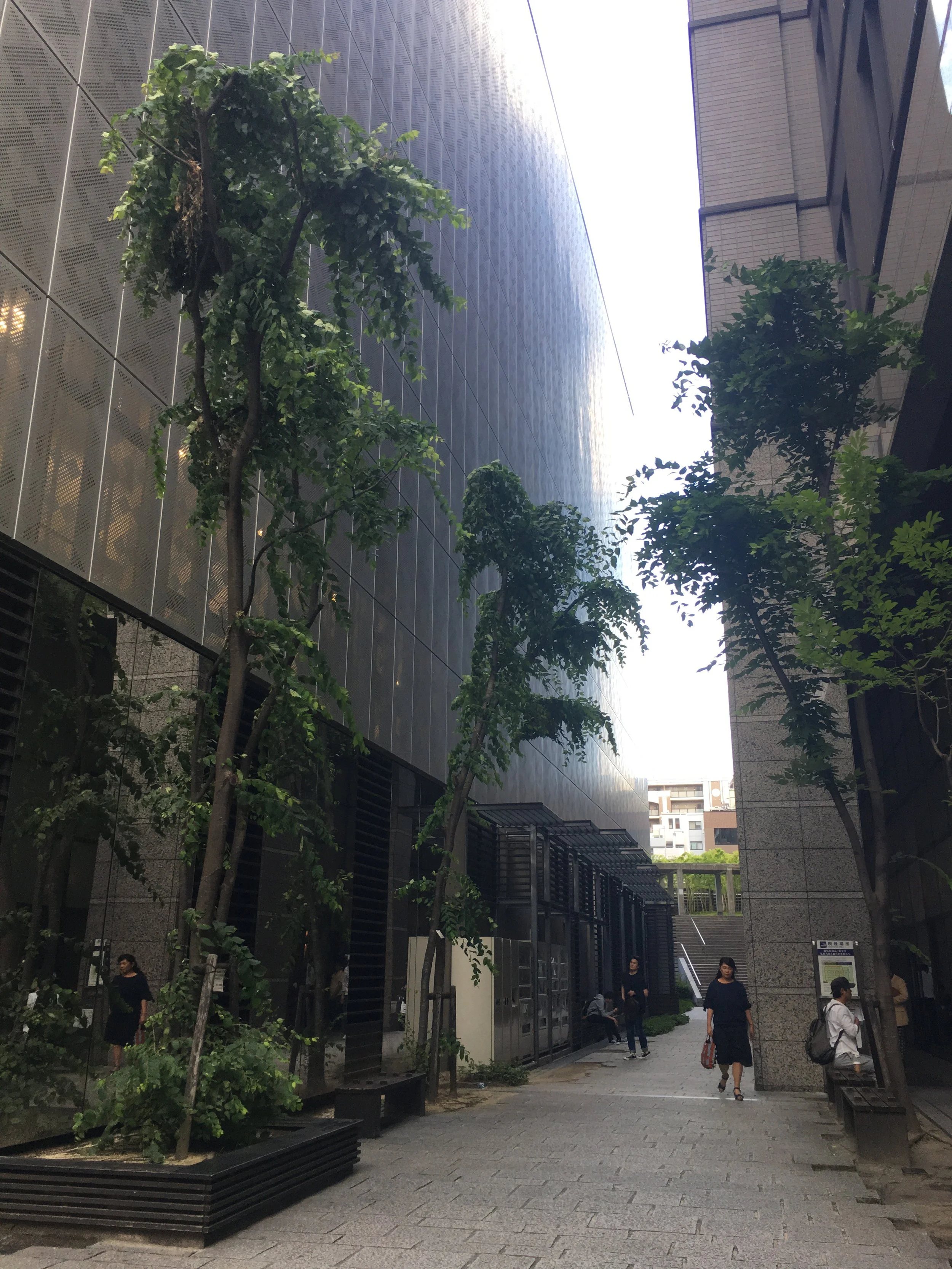Life-Changing Kyoto
I wrote in another post about Okinawa and that Kyoto is like a living haiku…Kyoto is of particular poetry.
Maiko, or Geisha in training performing
Old Kyoto
Why Kyoto?
Kyoto sticks to its roots. I’m not sure why, but to me, the notion of Japan comes with a lot of continuity of its history of tradition (this isn’t the time or place to talk about the Japanese colonization of Korea). There’s diligent attention to respecting certain practices of Japanese culture. This protection of Japan makes for living intrigue and is concentrated in Kyoto. The city is host to 17 UNESCO World Heritage Sites, and is a testament to its perseverance in upholding the old guard of its culture of place.
Here are the highlights.
*This site contains affiliate links, we may receive a commission if you make a booking through us.
Kaiseki Meal with Maiko, Geisha in Training
Kaiseki meal
In Kyoto, you can experience a kaiseki meal and entertainment song and dance with a maiko, or a geisha in training.
The meal itself is inclusive of a roster of traditional Japanese eats, the drinks are ongoing, and interacting with a woman who chooses to live this traditional lifestyle is fascinating. The entertainment is fun and engaging. You will have the opportunity to speak and visit with the maiko one-on-one and revel in an evening of performance, song, dance, and drinking games.
Here, demo-ing us drinking games
The maiko we spoke with expressed she’d chosen her career path because in one sense she gets to reclaim the tradition of her country. And in another, it’s an access point for her to meet people from all over the world today and learn about them, it’s both an anchor of traditional home and a tether to the wider world.
Activities
In addition to cultural experiences, the simple walking around Kyoto is a sensation itself. Temples sit around the city with garden areas, the design is straightforward to traverse pedestrian-style.
River Bed
On the river bed, people sit, eat, drink, hang out, and take in the views.
Kyoto riverbed in the evening
There are small alleyways with inviting seafood and local fare.
Fushimi Inari
Perhaps the most notable attraction is the notorious Fushimi Inari. The bright orange gates to be walked feel like a dream. It can be very crowded however so I recommend going as early in the AM as possible. There are a thousand gates to walk through and it’s something.
Ceremonial things to do at the top of Fushimi Inari and along the way
Walking Fushimi Inari is an experience to remember
Nishiki Market
The Nishiki market is captivating, a huge place that has vendors that sell everything from food to hand-painted bowls. It’s a bustling spot with oysters on the half-shell right there, goodies in wrappers, there are touristy gift items, and plenty of locally created crafts.
Bowls and many items hand-painted
Lots of seafood to be had
The surrounding area has some both compelling and peculiar finds.
Vintage toy shop
Lotto stand, Image by Andrea De Santis
Kinkaku-ji Temple (Golden Pavilion)
Exactly what its name bears, the Golden Pavilion is a resplendent golden Zen Buddhist temple that sits in tranquility atop the water. The temple is slightly further from where most people stay and the old-town downtown area. It’s a UNESCO Heritage Site, and a top attraction being a particular vista within the city of Kyoto.
Arashiyama sans crowds, Image by Andrea De Santis
Yasaka Pagoda, Image by Daniel Tseng
Arashiyama Bamboo Grove
Another iconic landmark just outside of the city, the bamboo grove is known for the immensely tall stalks of bamboo, obviously. They pillar up towards the sky and line the pathway of the grove. The shrouded sky via the bamboo that hug around you make for its unique walkway. Be forewarned that like Fushimi Inari, the walkway can get crowded. Again, I recommend going at an early hour to avoid intense crowds.
Yasaka Pagoda
The pagoda is like the Notre Dame of old Kyoto. Once you’re there walking around, it’s impossible to miss. Technically within the Yasaka Shrine, the pagoda stands regal amidst other old-style architecture of Sanzon Zukuri which defines a three-story building alongside with a five-story pagoda.
Ginkaku-ji Temple (Silver Pavilion)
The Ginkaku-ji Temple is another Zen Buddhist temple similarly located in the north part of Kyoto like the Golden Pavilion, but on the eastern part. It’s likewise another UNESCO World Heritage Site and yet despite its name and the comparative Golden Pavilion, the silver addition to the temple’s covering never took place. The building itself is pretty in architecture and the surrounding gardens are beautiful.
Image by tjtj
Downtown
The main attraction area of Kyoto is the smaller-scale area that maintains traditional architecture. However, greater Kyoto is fairly large and has an area downtown with high rises. It’s worth venturing into this area as well though I recommend staying in old town to truly immerse in what old Japan was built of.
Shimogyo-Ku, Kyoto-Shi
Shimogyo-Ku, Kyoto-Shi
Where to Stay? Ryokan: Kyoto Takasegawa Bettei
The Kyoto Takasegawa Bettei is a ryokan in the heart of old Kyoto in front of the river. It retains the Japanese aesthetic in features, it’s kind of like the idyllic vision of calm Kyoto mixed with a little color. The rice paper screen doors give way to the culture of the old city and allow for the feeling of being in a preserved place. It bestows this slowed-down pace that is really nourishing. The sounds nearby are of straw and stick brooms that whisk the concrete in front of homes at dawn and are only reprimanded by the quiet vision of falling blossoms if you go in the spring season.
*Safety tip
Kyoto is like its identity expresses, a level of quiet. When in public places, especially more meditative realms like the temples and walking paths, keep voices to a moderate level of noise, this just feels like the most respectful way to visit. Also, remember to always take your shoes off at the entrances to places, Japan practices this etiquette. Other than that, the safety vibe of Kyoto is extraordinarily high, a definite recommendation for all travelers, but for sure safe even for youth travelers, solo travelers, and solo female travelers alike.
Bottom line
If you have an interest in Japan, Kyoto is a place of intrigue. It embodies what I believe compels many people from the outside. It preserves a modern essence of what’s special in Japanese culture. It boasts it in whispers in the fabric of kimono and the curated flora of its gardens. The people are invitingly welcoming and the city design is serene.

